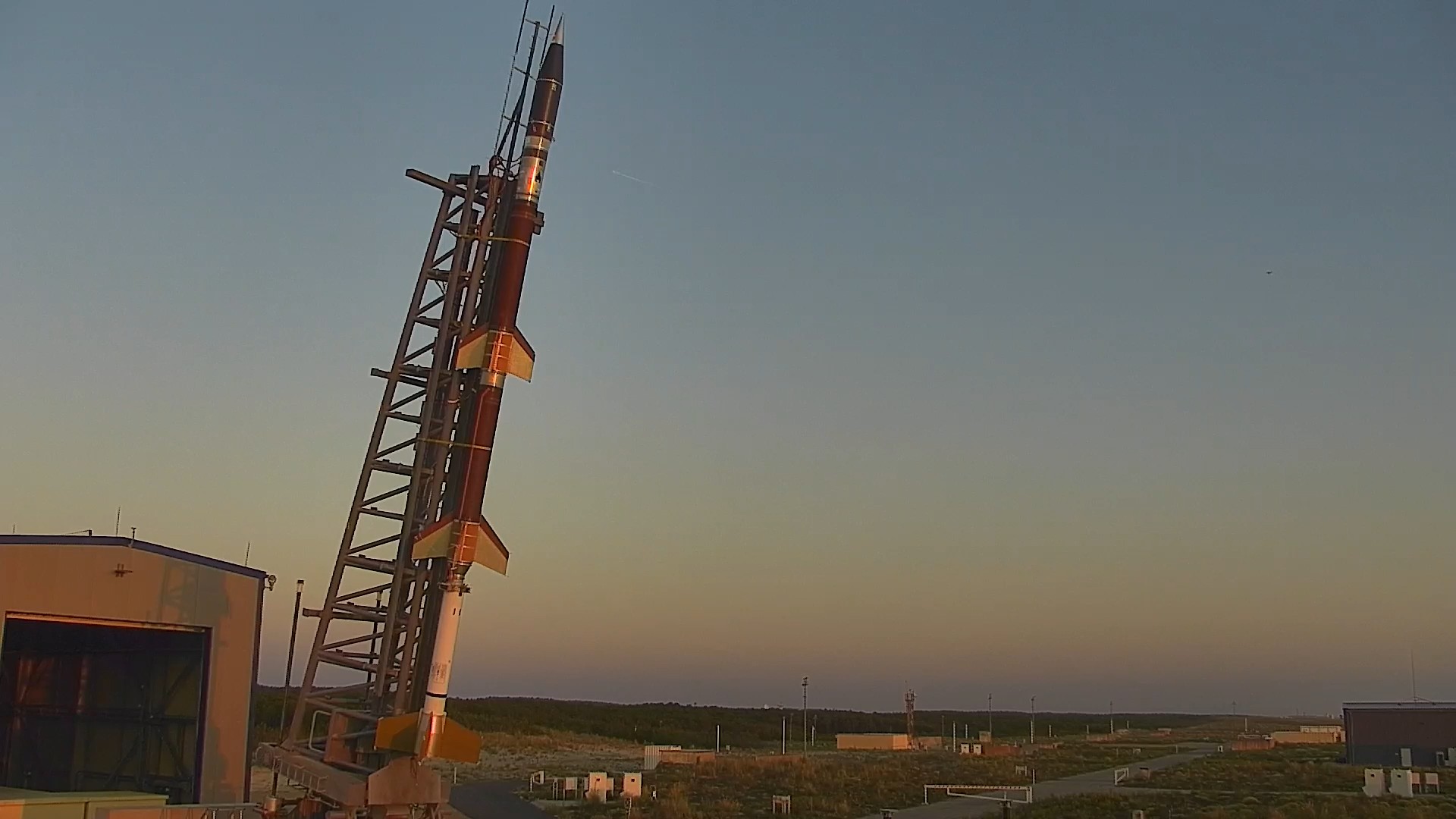Western nations continue to develop ground-launched hypersonic weapon systems (HWS). However, despite some incremental success, testing and fielding have progressed more slowly than anticipated.
By definition, hypersonic weapons travel at speeds greater than Mach 5 (1,715 m/s). While there are many weapons which meet this definition, such as ballistic missiles, the ‘hypersonic’ label is primarily used to refer to hypersonic weapons capable of manoeuvring during flight. These fall into two primary categories. Hypersonic glide vehicles (HGVs) are launched atop a carrier missile, much like standard ballistic missile warheads; after separation from the missile, they transition to an unpowered glide mode for the rest of the mission. Hypersonic cruise missiles (HCMs) operate much the same as conventional cruise missiles, albeit at much higher speeds which are achieved through use of scramjet engines.
Their combination of speed and manoeuvrability is generally presumed to provide hypersonic weapons with the ability to evade air- and missile-defence systems. On 4 May 2023, the Ukrainian armed forces used a PATRIOT air and missile defence system to shoot down a Russian Kh-47M2 Kinzhal missile. However, the significance of this intercept has been open to debate. While Russia classifies the Kinzhal as a hypersonic weapon based on its speed, many analysts generally classify it as an aeroballistic missile rather than a ‘true’ hypersonic weapon. The Kh-47M2 is an air-launched derivative of the 9M723 Iskander ground-launched ballistic missile. While it achieves a reported speed of Mach 10, the weapon has relatively limited capacity to manoeuvre after launch, and primarily maintains a ballistic flight path, which permits calculation of an intercept vector.
With the Kinzhal thus disqualified, the only known ‘true’ hypersonic weapon to have been used in combat thus far is Russia’s 3M22 Zircon (also known as ‘Tsirkon’) HCM. According to the Kyiv Scientific Research Institute of Forensic Expertise, piecing together evidence from debris, the Zircon was used in a 7 February 2024 strike on Kyiv. The weapon was confirmed to have been used by Russian President Vladimir Putin in a 29 February 2024 announcement. The weapon has been reported to have been used subsequently in various strikes on Ukraine, but thus far remains one of Russia’s less-used munitions.

Credit: Kyiv Scientific Research Institute of Forensic Expertise
Depending on their design, HWS can be air-, ground- or sea-launched. Kinzhal and Zircon are respectively examples of air- and sea-launched weapons. However, the remainder of this article will focus on select ground-launched hypersonic weapon system development efforts by the US and some of its allies.
LRHW Dark Eagle
The United States’ armed forces and aerospace industry have been researching hypersonic technology for two decades. However, the Pentagon’s enduring focus on Afghanistan and Iraq limited the resources which could be devoted to technology with no direct utility for counterinsurgency operations. The realisation that Russia and China had pulled ahead in the race for this revolutionary new weapon category finally motivated the Department of Defense (DoD) to declare hypersonic weapon system (HWS) development a priority. The Fiscal Year (FY) 2019 National Defense Authorisation Act accelerated development of HWSs, and every subsequent annual budget has added funding for the various projects in this category.
The only ongoing US development programme of a ground-launched HWS is being conducted by the US Army. It is designated the Long-Range Hypersonic Weapon (LRHW), also known as Dark Eagle. As defined by Army budget documents, the LRHW mission profile is to defeat anti- access/area denial (A2/AD) capabilities, suppress adversary long-range fires, and engage other high-payoff, time-critical targets.
The development and testing programme is being conducted in conjunction with the US Navy which is acquiring a ship- and submarine-based variant designated as the Intermediate-Range Conventional Prompt Strike (IR-CPS). Both weapons are HGVs, and both utilise the Common Hypersonic Glide Body (C-HGB) developed by Dynetics Inc., which incorporates the warhead, guidance system, cabling, and thermal shielding. The C-HGB will be paired with an 87.6 cm diameter, two-stage booster rocket to form the All Up Round (AUR) vertical launch system to be used by both services. Each service has developed its own launch system and support equipment. Lockheed Martin is acting as systems integrator for the ground-based variant. Dark Eagle will be deployed in launch canisters mounted on mobile transporter-erector launchers (TELs). Each TEL will carry two AURs, with four TELs plus the mobile battery operations centre and supporting vehicles forming a battery. The range of LRHW is estimated to exceed 2,775 km.

Credit: Lockheed Martin
Testing setbacks
Testing and evaluation of the LRHW has been progressing more slowly than planned. The development programme was initiated in March 2019 and is being led by the Army’s Rapid Capabilities and Critical Technologies Office (RCCTO). In 2019, the service cited the goal of delivering a “prototype ground-launched hypersonic weapon with residual combat capability” by FY 2023. The Army and Navy developed a Joint Flight Campaign (JFC) to test and evaluate overall system performance, including missile body and payload performance. Some tests were configured to measure parameters of specific relevance to the individual services’ operational concepts and mission profiles. A total of three LRHW-specific flight tests were planned for 2022 and 2023. These were intended to lay the basis for operational certification of the Dark Eagle prototypes and pave the way for transition to an engineering and manufacturing development (EMD) and subsequent procurement programme of record. However, all of the flight tests scheduled during 2022 and 2023 either failed or were aborted because of launcher or launch sequence issues identified at the test range.
Following a multi-month review of what caused the previous failures, the Army is once again moving forward with the evaluation programme. Service leaders have conceded that the original timeline (which was driven by the desire to catch up with Russia and China) was highly ambitious. As Lt. Gen. Robert Rasch, head of the Rapid Capabilities and Critical Technologies Office (RCCTO), stated in March 2024, the service has used the testing pause to “reflect on where we had not done enough developmental testing. Obviously, a programme that’s moving as fast as RCCTO has on hypersonics, there’s risk involved in going fast. You’re doing acquisition and running with scissors at the same time”. As a consequence, the Army is now focused on risk reduction as it progresses towards a resumed flight-testing cycle. It has spent the first months of 2024 analysing the ground support equipment and conducting “high fidelity” subcomponent testing, including simulated missile launch procedures.
Resumption of testing
On 28 June 2024, a joint Army/Navy end-to-end flight test was successfully conducted at the Pacific Missile Range Facility in Hawaii. It provided data on the performance of the AUR used for both the Navy’s IR-CPS and the LRHW. The two-stage missile flew approximately 3,200 km to a test range in the Marshall Islands, maintaining the prescribed course and releasing the glide body, which reportedly struck the intended target. However, unlike the failed LRHW tests attempted in 2022 and 2023, this event did not include any service-specific ground equipment such as launch canisters, TELs or control vehicles; rather, the AUR was positioned and launched from a free-standing platform.
Now that the joint Navy-Army launch in Hawaii has confirmed full functionality of the AUR, the Army plans to conduct an end-to-end launch test of the complete LRHW system. Citing security concerns, the service has declined to announce the timing of the test in advance. However, officials have previously cited the goal of attempting the full system test flight by the end of FY 2024 (30 September 2024), with certification of the weapon system by the end of the first quarter of FY 2025 (31 December 2024). This is compatible with the goal stated by General Rasch during March 2024 testimony before the US Congress, to “transition the LRHW capability to Program Executive Office (PEO) Missiles and Space in Calendar Year 2024 where the program will continue flight testing and further development”.

Credit: US Navy
If – and when – this test is completed successfully and the missile design is certified, the Army expects to immediately initiate assembly of AURs for distribution to the first operational battery. The Government Accountability Office (GAO) Weapon Systems Annual Assessment released in June 2024 cites Army officials as stating that once a successful flight test is achieved, the first production missile will be delivered within approximately six weeks and the first battery of eight missiles will be delivered within approximately 11 months. However, the GAO report also cautioned that “if the Army discovers issues with missile performance in flight testing, missile deliveries and the fielding of the first operational LRHW system could be further delayed. According to Army officials, the schedule for the MTA rapid fielding effort for two more batteries is also contingent on what the Army identifies as the root cause of the integration issues”.
Moving toward fielding
The Army’s budget and contracting activity are compatible with the service’s optimistic statements regarding the new weapon system. In May 2024, the Army and Lockheed Martin announced a new USD 754 million contract in support of the LRHW programme. Lockheed Martin will supply additional LRHW battery equipment, systems and software engineering support, as well as logistics solutions to the Army.
Moving forward, the Army’s 2025 budget request includes USD 1.28 billion for continued investment in the LRHW. This includes USD 538 million for research, development, test and evaluation (RDT&E) and USD 744 for missile procurement. This budget allocation displays a significant shift from the FY 2024 budget plan, which called for USD 944 million for RDT&E, but only USD 157 million for missile acquisition. The proportional change in favour of missile acquisition is evidence that the Pentagon is confident that the LRHW is progressing toward an operational capability. According to Army budget documents released in March 2024, “[the 2025 budget request] continues the development of the LRHW Common Hypersonic Glide Body (C-HGB) and provides incremental funding for the All Up Round plus Canister (AUR+C) and C-HGBs for basic load and reload AUR+C and test/training/certification AUR+Cs. FY 2025 procures LRHW Battery 3 Ground Support Equipment (GSE) and the basic load of eight All-Up Round + Canister (AUR+C)”.

Credit: US Army
Activation and deployment
Current deployment plans call for one operational battery to be assigned to each of the service’s five Multi-Domain Task Force (MDTF) formations; the LRHW battery will be incorporated into the task force’s long-range fires battalion, and serve as the MDTF’s long-range strategic fires unit. In 2021, the Army designated Bravo Battery of the 5th Battalion, 3rd Field Artillery Regiment (5-3 FA) as the LRHW battery of the 1st MDTF, based in Washington State. That same year the unit received the full LRHW equipment set – minus the then still in development AURs – in order to develop and practice operating procedures. Once the LRHW prototypes are certified as operational, this unit will be the first to receive a full set of operational missiles. The battery will then be considered provisionally deployable if needed. However, this will not constitute initial operational capability (IOC). Formal declaration of IOC will take place at a later, as yet undetermined date, potentially upon fielding of the weapon system by the 2nd MDTF.
The 2nd MDTF was established in 2021 in Germany, with some elements (including the long-range fires battalion) stationed in New York State. In July 2024, the United States and Germany issued a joint declaration that the 2nd MDTF would receive its long-range fires battalion in 2026. The wording of the joint declaration was, however, quite vague with regard to a specific LRHW timeline. “The United States will begin episodic deployments of the long-range fires capabilities of its Multi-Domain Task Force in Germany in 2026, as part of planning for enduring stationing of these capabilities in the future. When fully developed, these conventional long-range fires units will include SM-6, Tomahawk, and developmental hypersonic weapons, which have significantly longer range than current land-based fires in Europe.” This careful phrasing indicates that the Pentagon, while confident that LRHW will become a viable weapon system, has become cautious regarding the precise pace of development and the timeframe for transition to an acquisition programme of record.
VMaX
In Europe, France is also developing a ground-launched HGV. The Véhicule Manœuvrant Expérimental (VMaX) programme was announced in January 2019 by the then Defence Minister Florence Parly. At the time, the minister explicitly cited the hypersonic development programmes of China, Russia and the United States as the trigger for France to follow suit. “Many nations are procuring such weapons, and we have all the necessary skills to develop one: we could not wait,” Parly said. “Three of the five permanent members of the United Nations Security Council, of which France is a member, are already engaged in this arms race with their own programmes,” she stressed.
The programme is progressing under the direction of the French defence procurement agency, the Direction générale de l’armement (DGA), in cooperation with ArianeGroup as prime contractor. Several US firms are also supporting the development and testing programme. These include Corvid Technologies LLC, Kratos Defense and Rocket Support Services Inc., and Peraton Inc. US contributions include the clamshell nose cone shroud which was developed by Peraton to protect the HGV during the booster rocket’s ascent.

Credit: DGA
Flight testing programme
The first successful experimental launch under the VMaX programme was conducted on 26 June 2023 from the DGA’s Essais de missiles missile test centre in Biscarrosse, on the Bay of Biscay. The DGA confirmed on 27 June 2023 that it had launched a sounding rocket carrying the VMaX HGV demonstrator. The approximately 2 m long glide body was released at hypersonic speed around the point of the rocket reaching its apogee, and subsequently began its descent, making an orderly splashdown as planned in the Celtic Sea to the South of Ireland. The primary purpose of the 2023 test flight test was to gather data for use in refining the design and preparing for future test events. The test was considered to be fully successful. According to flight managers, all events, manoeuvres and functions of the vehicle performed as expected.
While this was the first flight test deploying the VmaX demonstrator, it was the third sounding rocket flight conducted under the French hypersonics research programme. The two previous tests, designated Pathfinder and FS-0, respectively, were launched in 2021 and 2022 to gain telemetry data and flight performance parameters to support the actual demonstrator flights. Notably, the flight testing is being conducted in collaboration with the US Navy Sea Systems Command under a 2020 agreement. The Terrier Oriole booster rockets used in the VmaX flight tests are being supplied by the US Navy, which has also dispatched detachments to Biscarrosse to support the French military’s launch operations.
Moving forward
In its 27 June 2023 press statement, the DGA confirmed that FS-1 was the first of the sounding flights to carry the VmaX HGV demonstrator. It further stated that the experiment “prepares the future of our national hypervelocity roadmap” and that the collected data would provide lessons for the remainder of the experimental flights. The next test flight, designated FS-2, has been provisionally planned for 2025. That test will be more demanding than the last one, according to ArianeGroup’s military advisor, Adm. Charles-Henri du Che. “The V-MAX demonstrator will be followed by a higher-performance one, which will go farther in flight testing,” he told Parliament in May 2023. “Once we have those two demonstrators, we will be in a position to say France masters the technology,” du Che said.

Credit: DGA
The precise timeline of the development programme remains uncertain. The first flight of the VmaX demonstrator was originally supposed to be conducted in 2021, which would appear to place the programme approximately two years behind schedule. While Paris seems determined to acquire hypersonic weapons – not least in order to match the capabilities of potential adversaries – the French defence ministry has not publicly declared a target date for a decision regarding an acquisition programme.
HGV for island defence
Japan plans to deploy an initial ground-launched ‘High-Speed Gliding Projectile’ (HVGP) “for island defence” in FY 2026. The HGV has been in development since 2018, with Mitsubishi Heavy Industries (MHI) acting as prime contractor. On 6 April 2023, the MoD awarded MHI a procurement contract for mass production of the Block 1 variant of the HGV, with deliveries slated for 2026–2027. The Block 1 is expected to fly at high supersonic rather than hypersonic speeds, with a range estimated at somewhere in the region of 500 km to 900 km. Based on computer-generated footage in a video released by Japan’s Acquisition, Technology & Logistics Agency (ATLA) on 4 July 2024, the Block 1 variant appears to be what is perhaps best described as some form of endo-atmospheric manoeuvring re-entry vehicle (MaRV) rather than an HGV.
Enhanced capability variants designated Block 2A and Block 2B are already in development, and are planned to operate at hypersonic speeds, using HGVs as the payload, rather than the projectile used on Block 1. Block 2A is expected to be operational in FY 2027, while FY 2024 budget documents show development of Block 2B being completed in 2030. The upgraded variants are expected to extend operating range to approximately 2,000 km and 3,000 km respectively.
Flexible stand-off capability
As depicted in the aforementioned ATLA video, the Block 1 projectile will be launched atop a solid-fuel booster rocket and launched from a truck-based TEL. After reaching the appropriate altitude, It will separate from the carrier rocket and autonomously approach its designated target. The projectile approaches its target at altitude, then assumes a roughly 90° angle of descent to execute a top-down terminal attack run.

Credit: ATLA
Japan is developing the HVGP Block 1/2A/2B for the defence of the nation’s many outlying islands. The Japanese Ground Self-Defense Forces (JGSDF) plans to establish two artillery battalions equipped with the new weapon system. The units will presumably be garrisoned on the main islands, and deploy small detachments as needed. Being truck-mounted, the HVGP could be readily redeployed by air or sea as the threat scenario dictates. This mobility also makes pre-emptive targeting by an enemy more difficult.
HVGP will provide another means for the JGSDF to neutralise well-defended high-value targets – including missile launchers, command and control (C2) infrastructure, or air defence systems on land. Alternatively, it could potentially be employed against ships at sea in order to defend against an invasion force or target enemy warships. ATLA has previously published graphics of an HGV targeting an aircraft carrier. HVGP is one of several – mostly non-hypersonic – long-range weapon systems being acquired to enhance Japan’s stand-off defence capabilities and counterstrike capacity.
Flight testing
Japan conducted its first hypersonic weapon test on 23 March 2024, from a launch site in California. ATLA revealed the test on 4 July 2024, posting video footage of the launch on the agency’s YouTube page. ATLA referred to the event as a “pre-launch test of a Hyper-Velocity Gliding Projectile for island defense.” A second flight test took place shortly after in April. The video clearly shows the glide body, recognisable by its four fins, atop the booster as it rises up from the TEL. The agency did not reveal whether the payload separated from the rocket during either test, or whether a separation had been planned. Rather, the weapon system’s manufacturer declared that the purpose of the tests had been validation of “measurement” units; Western analysts have interpreted this to mean that the performance and viability of components such as materials, electronics, inertial navigation and structural assemblies were tested.

Credit: ATLA
Japan’s hypersonic cruise missile
Japan is also developing an HCM capable of attacking both ships and ground targets. The programme was initiated in 2019, with the goal of fielding an operational weapon in the 2030s. The Japanese MoD’s budget estimate shows the development timeline running through the end of FY 2031. ATLA has awarded MHI a contract to develop a prototype dual-mode scramjet engine for the weapon’s propulsion system. According to ATLA, both the HVGP and the HCM will use a combination of satellite and inertial navigation. Additionally, the targeting system of both weapons will utilise radio frequency and infrared imaging, to enable engagement of moving targets. Again, according to ATLA, both are expected to carry a penetrating warhead which would detonate deep within an enemy vessel.
Wider circles
Of course, the aforementioned countries are not the only ones pursuing ground-launched hypersonic weapons. Indeed, examples such as Russia’s Avangard HGV and China’s DF-17/DF-ZF HGV, along with probable HGV for DF-27 have all been covered previously in ESD.
Elsewhere, South Korea’s Agency for Defense Development (ADD) has initiated the Hycore hypersonic cruise missile programme in 2018 in collaboration with Hanwha. While much information on the missile remains classified, it is known that Hycore is designed to be a ground-launched system featuring a two-stage solid-fuel rocket booster, and a scramjet engine estimated to be capable of exceeding Mach 6. India (in cooperation with Russia) is pursuing the Brahmos II cruise missile with a previously-stated goal of attaining flight speeds of Mach 8, although some sources have stated the speed may have been capped at a lower level. Testing of the weapon was supposed to begin in 2020 but has been delayed. New Delhi hopes to develop ground-, sea- and air-launched variants. Britain and Australia are pursuing sea- and air-launched hypersonic systems respectively, in cooperation with France and the United States. The technology is developing in ever wider circles, and will soon become a more common presence on the battlefield.
Sidney E. Dean





![A Strategic Partnership in Action: Turning the Hague Defence Investment Plan into Industrial Reality Michael Coulter, President and CEO, Hanwha Global Defense [Hanwha Aerospace]](https://euro-sd.com/wp-content/uploads/2025/07/250425-한화-마이클-쿨터-사장님2799-Kopie-218x150.jpg)






